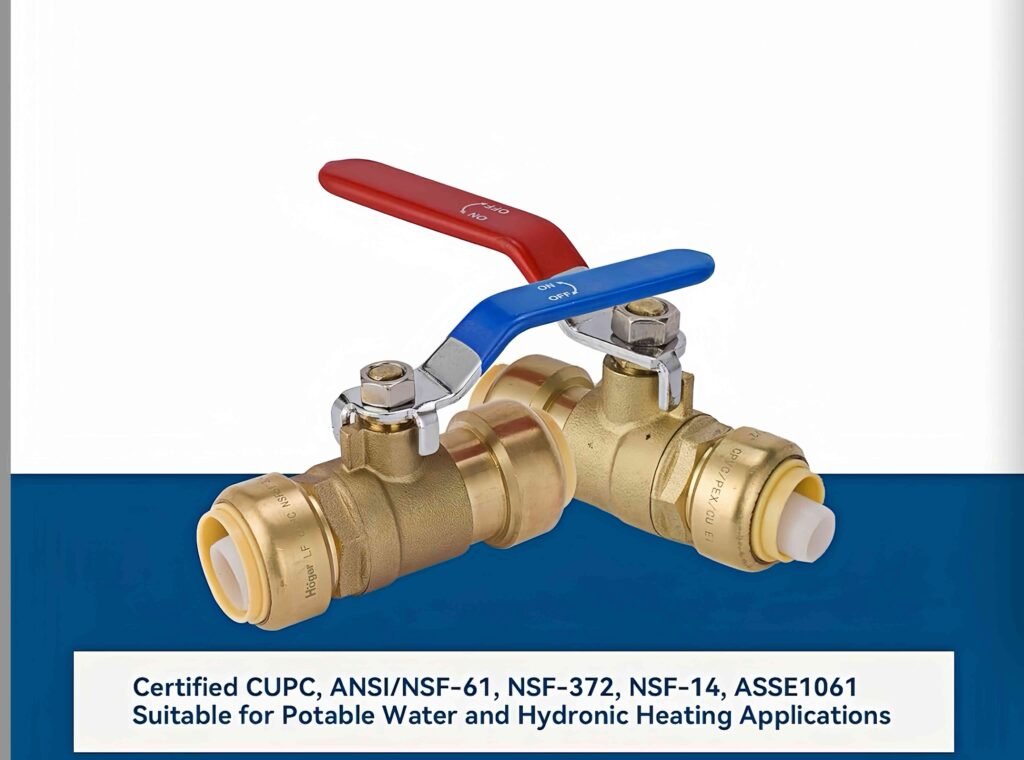Top 10 Hydraulic Manifold Manufacturers in China

What is a Hydraulic Manifold? A hydraulic manifold is an element within a hydraulic system. It controls the flow of fluid, which in turn controls the transfer of power between actuators, pumps, and other devices. The fluid is controlled by hydraulic valves and directed to a hydraulic cylinder or motor. Usages of Hydraulic Manifolds Metal […]
Gas Ball Valve Vs. Water Ball Valve

Choosing the right ball valve—gas or water—is crucial for safety and efficiency. Gas ball valves handle high pressure and temperature with specialized seals, while water ball valves are cost-effective and suited for lower pressures. Always match the valve to the application, ensuring proper certifications and materials to avoid leaks, damage, or hazards in your system.
Brass Ball Valve Vs PVC Ball Valve: Which Is The Best Choice?

When choosing between brass and PVC ball valves, it’s crucial to understand their differences. Brass offers durability, heat resistance, and a tight seal, making it ideal for high-pressure applications. In contrast, PVC is cost-effective, corrosion-resistant, and easier to install, but less durable under extreme conditions. Selecting the right material depends on your specific plumbing needs.
Guide to Best Material Pipe for Freezing Conditions

PEX piping is the best choice for freezing conditions due to its flexibility, allowing it to expand and accommodate freezing water. Copper and CPVC are more prone to bursting, with copper being the most vulnerable. To minimize freeze damage, insulate pipes, shut off outdoor faucets, and use heat cables in colder areas. Always consult a plumber for the best material for your specific needs.
The ultimate guide to NSF and cUPC Certification

NSF certification ensures that products meet stringent safety and quality standards for public health. It’s commonly used for items in kitchens, plumbing, and water purification systems. Meanwhile, cUPC certification guarantees plumbing fixtures meet Canadian and U.S. standards for safety, durability, and efficiency. Both certifications boost consumer trust by verifying that products adhere to high-performance benchmarks.
Guide to Ball Valve Markings 101

Ball valve markings are essential for identifying key valve characteristics like size, pressure ratings, material composition, and certifications. Understanding these markings ensures safe, efficient valve selection and usage in plumbing or industrial systems. This guide covers common ball valve markings, their meanings, and how they influence valve performance, helping users make informed decisions for optimal flow regulation.
The Ultimate Guide to Brass Fittings

Brass fittings are essential for connecting pipes and controlling fluid flow in plumbing, gas lines, and industrial systems. Known for their durability, corrosion resistance, and versatility, brass fittings come in various types like compression, flare, and threaded fittings. Ideal for high-pressure environments, they offer reliable, leak-proof connections and are easy to install, making them a top choice for professionals.
A Guide to Adjusting Water Pressure Regulator

Adjusting a water pressure regulator is essential for maintaining optimal water flow and preventing damage to your plumbing system. By carefully fine-tuning the regulator, you can ensure stable pressure, extend the lifespan of appliances, and enhance water efficiency in your home. Proper adjustment also helps prevent leaks and other pressure-related issues, contributing to a more reliable plumbing system.
Toilet Wax Ring 101

A high-quality wax ring is essential for maintaining a leak-proof seal between your toilet and the floor. It prevents water damage, odors, and mold growth by sealing gaps and keeping your bathroom dry. Choosing the right wax ring ensures stability, durability, and long-lasting protection, making it a crucial component for any bathroom plumbing system.